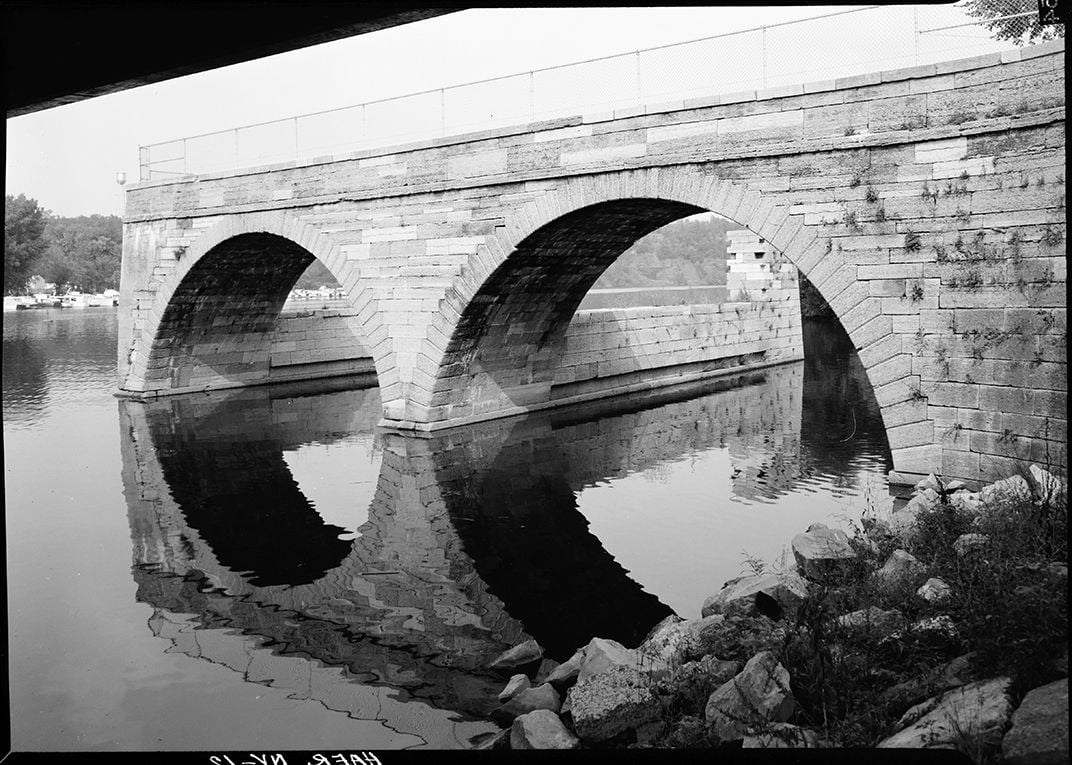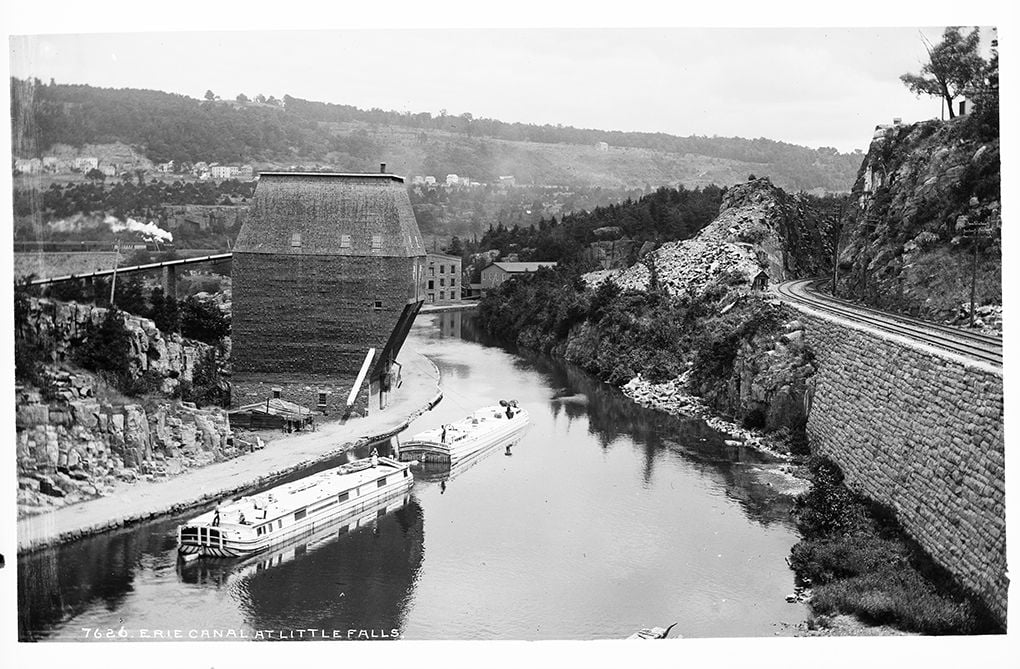Thank the Erie Canal for Spreading People, Ideas and Germs Across America
From Albany to Buffalo, navigate the history of the famed waterway
/https://tf-cmsv2-smithsonianmag-media.s3.amazonaws.com/filer/e7/8d/e78da86c-17d7-4cb1-8747-b4e8657748a2/erie_canal1.jpg)
More than two hundred years ago, it took two weeks to travel from Albany to Buffalo. Terrain was rough, shipping costs were high, and merchants had to contend with ox-drawn wagons. But on July 4, 1817, construction began on something that would change that long trip—and American commerce—forever. When the Erie Canal opened eight years later, it took only five days to travel between the two cities, and freight rates fell 90 percent.
To celebrate the canal, the thousands of workers who labored over it, and the millions of people that traveled along it, we revisit its history. From a corridor for ideas to a hotspot for disease transmission, the canal left a profound mark on American history.
The canal was mockingly known as “Clinton’s ditch”
The project was a brainchild of DeWitt Clinton, who served as mayor of New York City (where he established the public school system) and governor of the state. It was in this second role that Clinton secured funding for the canal, since the federal government repeatedly refused. The canal was seen as an absurd, expensive gamble, derisively called “Clinton’s ditch.” In fact, Thomas Jefferson said, “Talk of making a canal 350 miles through wilderness is little short of madness.”
But thanks to the New York legislature, the $7 million project (over $140 billion today) was funded—and was repaid within a decade by tolls.
It was the most ambitious engineering project of its day
The new waterway was dug 4 feet deep and 40 feet wide through forests and fields, rocks and swamps. A series of 83 locks helped level terrain that had once been passable only to slow-moving wagons. After eight long years of construction, the Erie Canal stretched 363 miles across the interior of New York, connecting the Great Lakes to the Hudson River—the longest artificial waterway ever completed in North America.
It required innovation—and patience
Even after Clinton got money for the Erie Canal, he lacked the basics, including professional engineers and construction materials. But the ad-hoc project brought out the best in frontiersmen. People invented hydraulic cement that hardened underwater; stump-pullers that allowed a team of men and horses to remove 30 to 40 tree stumps a day; and an endless screw device that made it possible for one man to fell a tree. Given the lack of basic supplies, the canal’s completion in just eight years is even more impressive.

It made New York a major city
Before the construction of the Erie Canal, New York wasn’t the city we know today. Ports like Philadelphia, New Orleans and Baltimore all ranked higher than NYC when it came to trade and traffic. But thanks to the Erie Canal, shipping between the Midwest and New York made the Empire City a commercial hub. Politician Elisha Williams even described the canal as “a river of gold [that will] flow into [New York’s] lap.” And he was right.
The canal revolutionized travel
Consumer goods and produce weren’t the only things moving from the Midwest to the East Coast on the Erie Canal—consumers themselves went for rides, too. In the canal’s first year, more than 40,000 people rode packet boats. The vessels were 60 to 80 feet long and 14 feet wide, with central cabins that served as dining room, kitchen, sleeping room and lounge. Before steam engines became the source of travel for the boats, the packets were pulled by mules. Passengers often sat on the roof of the boat, ducking their heads when they traveled beneath low bridges.
It helped move immigrants to the interior of the country…
Plenty of immigrants, many from Ireland, came to the interior of the country through their work on the canal. But travelers from Europe, Asia and Canada also made their way west on the completed waterway. The Erie Canal moved more immigrants westward than any other trans-Appalachian canal, making Buffalo (its western hub) a major port of immigration. By the early 20th century, English language schools were created in waterway communities for Italian immigrants and others moving into the country from abroad.
…but pushed Native Americans off their land
The canal transformed the lives of Native Americans in the state of New York. Its construction occurred during a period of intense “Indian removal” policies, and the canal itself ran through territory traditionally occupied by the Haudenosaunee (better known as the Iroquois Confederacy), forcing many of them to move. When Clinton was New York’s mayor, he claimed that “before the passing away of the present generation, not a single Iroquois will be seen in this state.”
But his prediction was a bit premature. Today there are more members of the Six Nations than there were at the end of the Revolutionary War—though many of them live in communities far from their ancestral homeland.

The canal was a hotbed for social experimentation
The canal was as effective at transporting new ideas as people and goods. Mormonism, abolitionism, feminism—all disrupted the status quo and took root or had significant moments along the Erie Canal. “The completion of the Erie Canal accelerated the collapse of the old social order... after the completion of the canal, the integration of social classes and of economic and domestic activities broke down dramatically,” writes historian David G. Hackett in The Rude Hand of Innovation. Take Mormonism, for example. Palmyra, a canal town, was home to Joseph Smith—the prophet who originated the Church of Jesus Christ of Latter-day Saints. Just 25 miles south of Palmyra is Seneca Falls, which hosted a convention of women in 1848 that spurred the suffragist movement. There were plenty more besides: Seventh Day Adventists began practicing their beliefs in canal towns, as did the utopian Oneida Community.
And it also acted as a vector for disease
When lots of people are using the same form of transportation, they may host invisible stowaways—germs. The first cholera epidemic in North America came from immigrants on clipper ships in 1832, and spread rapidly along the Erie Canal and into the rest of the country. During the outbreak, people were so afraid of migrants coming down the waterway that they kept boat passengers from disembarking. Smallpox and other contagious diseases spread over the canal, too.
It’s still used today…
Unlike the Chesapeake & Ohio Canal, another influential 19th-century waterway, the Erie Canal is still used for commercial shipping. Everything from Navy sonar equipment to giant beer cans have chugged their way across the water. The state expects more than 200,000 tons of goods will be shipped on the Erie Canal in 2017, a higher amount than any year in the past two decades. But that’s still a dramatic decrease from the 19th century, when millions of tons of goods were transported.
…but it can’t pay for itself
While the canal still transports commercial goods, it also caters to history buffs and pleasure cruisers. But the decrease in shipping means it’s no longer profitable. In 2014, the canal system brought in $1.5 million in tolls and permits—but took $55 million to operate and maintain, reports NPR.
/https://tf-cmsv2-smithsonianmag-media.s3.amazonaws.com/accounts/headshot/lorraine.png)


/https://tf-cmsv2-smithsonianmag-media.s3.amazonaws.com/accounts/headshot/lorraine.png)